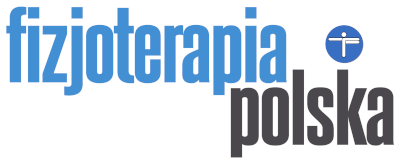Zaburzenia mięśniowo-szkieletowe związane z pracą u nauczycieli szkolnych: czynniki ryzyka, wskaźnik występowania oraz związek z jakością życia związaną ze zdrowiem w Emiracie Szardża, w Zjednoczonych Emiratach Arabskich
Alyazia Obaid Hassan Khudoum Almarashda, Kalyana Chakravarthy Bairapareddy, Meeyoung Kim
Inas Gita Amalia, Suharjana, Ahmad Nasrulloh, Enggista Hendriko Delano, Abiyyu Amajida
– Work related musculoskeletal disorders in school teachers: risk factors, prevalence, and association with health-related quality of life in Emirate of Sharjah, United Arab Emirates. Fizjoterapia Polska 2023; 23(5); 217-226
DOI: https://doi.org/10.56984/8ZG20A65A
Streszczenie
Wstęp. Celem tego badania było określenie wskaźnika występowania bólu mięśniowo-szkieletowego (MSP) związanego z pracą oraz korelacji między czynnikami ryzyka, poziomem aktywności fizycznej, stresem i jakością życia wśród nauczycieli szkolnych w Szardży, Zjednoczone Emiraty Arabskie.
Materiały i metody. Przeprowadzono badanie przekrojowe wykorzystujące wersję 23.0 programu SPSS do analizy statystycznej. Użyto testu Shapiro-Wilka, niezależnego testu t oraz jednoczynnikowej analizy wariancji ANOVA do porównania wyników jakości życia i poziomu stresu w zależności od zmiennych.
Wyniki. W sumie do badania rekrutowano 342 nauczycieli pracujących w szkołach prywatnych i publicznych. Wyniki wykazały wysoką częstość występowania MSP wśród nauczycieli. Najczęściej zgłaszane obszary to dolna część pleców, ramię i szyja, a następnie górna część pleców. Sugerowane przyczyny to długie godziny spędzane przed urządzeniami, przy średniej 6 do 9 godzin dziennie, duże obciążenie nauczania od 16 do 30 klas tygodniowo, starszy wiek większości uczestników (35 lat i więcej) oraz niska aktywność fizyczna. Co więcej, jakość życia jest niska wśród nauczycieli z znanymi przewlekłymi schorzeniami oraz pracujących w szkołach prywatnych. Stres był umiarkowany, gdy testowano wszystkie zmienne.
Wnioski. Bóle mięśniowo-szkieletowe związane z pracą są bardzo częste wśród nauczycieli szkolnych w ZEA. Wysokie występowanie jest związane ze starszym wiekiem, dłuższym czasem nauczania, większym obciążeniem dydaktycznym, słabą jakością życia i umiarkowanym stresem.
Słowa kluczowe
ból mięśniowo-szkieletowy, stres, jakość życia, nauczyciele
| Pobierz/Download/下載/Cкачиваете | Pobierz bezpłatnie artykuł w j. angielskim |

